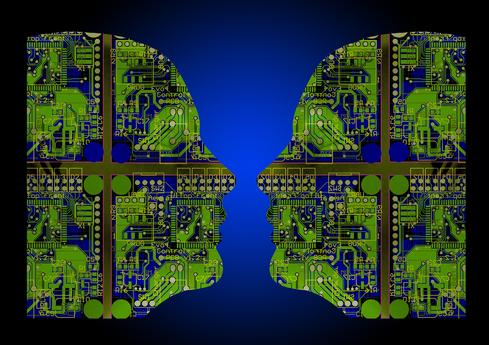In the connected future, the Internet of Things is expected to play a huge role in everyday life. Are enterprises ready to handle IoT, and what does it mean for security?


11 IoT Programming Languages Worth Knowing
11 IoT Programming Languages Worth Knowing (Click image for larger view and slideshow.)
There is little doubt the Internet of Things revolution is coming, and it will fundamentally change the way people interact with different devices. Still, for the last several years, most of the focus has been on the consumer market, with questions raised about the feasibility of low-level IoT devices such as Google's Nest smart thermostat and other basic housewares.
Where does this leave enterprises, especially when it comes to issues such as security, and what to do with all the data that IoT sensors can collect? After all, if there are privacy and security concerns about what a smart TV or thermostat can collect in a suburban home, what happens when IoT goes industrial, and critical systems are connected to the Internet and uploading terabytes of data into the cloud?
These issues regarding how business will respond to IoT were center stage at this month's Mobile World Congress. Although mainly a consumer show focused on mobile, MWC 2015 provided some critical insights into how enterprises should approach IoT, and what it means for IT departments and the CIOs tasked with overseeing this technology.
However, let's first start with popcorn.
At the MWC show, Niall Murphy, founder and CEO of Evrythng, an IoT cloud platform that connects consumer products to the Web and manages real-time data to drive applications, talked about how the 3.5 trillion products that are manufactured every year are becoming more and more digital. When it comes to IoT specifically, he estimates that there will be about one trillion of these connected products by 2020.
In his view, Murphy believes that businesses should not only focus on how things get connected, but also on how things become connectable.
"Smart does not mean that something is connected -- or if something is connected, it doesn't mean it is smart. Something becomes smart when it is connectable," he explained.
As a way of illustrating this point, he used a popcorn demonstration. With help from the audience, he showed how a Web-based system can pop popcorn -- thus during an old-fashioned, unconnected activity into a new, IoT-based function.
Cloud And Security Matter
Within the sphere of IoT, Murphy emphasized the importance of the cloud with this new ecosystem, and how the technology is needed to operate and manage these trillion or so connected products. In addition, the product themselves become data-collection nodes, and these products are now nodes in a giant, global network.
There is a consumer approach with business implications, as well as a fundamental business transformation.
After his presentation, he took part in panel discussion on how different objects and different languages connected through the IoT are going to change businesses over the course of the next five years, as a vast array of products become connected by different methods.
Murphy was joined by several executives working with IoT, including David Friedman, CEO of Ayla Networks; David del Val Latorre, who oversees research and development at Telefonica; and Thomas Svensson, a senior vice president at ThingWorx.
What are these executives thinking about when it comes to IoT? One word: Security.
Murphy addressed the concern by saying that the enterprises are now in the role of almost representing the types of services IoT provides. In turn, they are responsible for protecting the security of the consumer.
[Read about the IoT driving the future of cars.]
"Product manufacturing brands have the pressure to assess the security of the product," Murphy said. However, a lot of this depends on what data these devices capture and the relationship with the consumer. The paradox appears when trying to deliver a customized experience.
IoT's Message In A Bottle
In addition, IoT-connectable products radically change the relationship between consumers, products, and brands. Take alcoholic beverages for example.
Murphy presented an NFC-enabled, smart tag for whiskey bottles that grew out of a partnership between Evrythng and Thinfilm.
The NFC tag makes it possible to track the bottles. With the help of a smartphone, the manufacturer can see whether the bottle's seal has been broken. This helps keep tabs on the stock control -- a futuristic type of anti-counterfeiting measure. According to Thinfilm, its smart labels are impossible to copy or modify. These smart labels use OpenSense, a new wireless technology for enhanced IoT product security.
Think about that the next time you walk down the aisle of your favorite liquor store or step up to the bar after a long day at the office. The question then becomes one of whether the same technology be used to measure whether people are actually drinking the whisky? Is it times to change the way the drinks are distilled? If a person likes this particular brand, would they also enjoy a different type of alcohol made by the same company?
As products become connectable, the enterprise needs to be ready for the connected revolution. There's a lot of promise here, as well as some warning signs.
Attend Interop Las Vegas, the leading independent technology conference and expo series designed to inspire, inform, and connect the world's IT community. In 2015, look for all new programs, networking opportunities, and classes that will help you set your organization’s IT action plan. It happens April 27 to May 1. Register with Discount Code MPOIWK for $200 off Total Access & Conference Passes.
About the Author(s)
You May Also Like







